February 13, 2008: Books and Arts
Searching for Jewish Cuba
Anthropologist Ruth Behar *83 travels back to her native land
Museum celebrates 125 years with handbook and exhibition
For a complete list of books received, click here.
Ruth Behar *83 explores the Jewish community her family left behind in the 1960s. (courtesy Rutgers University Press) |
Reading
Room
Searching
for Jewish Cuba
Anthropologist Ruth Behar *83 travels back to her native land
By Jane Carr ’00
For anthropologist Ruth Behar *83, Cuba is at once a homeland and a field site. Born in Havana, she moved to New York City as a young child with her parents, who were among thousands of Cuban Jews who left the island, mainly for the United States, to escape the economic turmoil of the 1960s. Although intermarriage and cultural assimilation make exact numbers difficult to assess, between 15,000 and 17,000 Jews had settled in Cuba by 1959, and today, between 1,000 and 1,500 remain.
Though Cuba had long captivated her imagination, Behar had no memories of life there and didn’t return until 1979, when she traveled to the island with a group of Princeton professors and students. Since the 1990s, she has gone back again and again, becoming a recognizable face in the synagogues and small communities of Jewish Cuba.
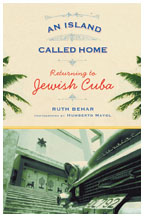 She
made a documentary film, Adio Kerida, about the Sephardic Jews
of Cuba in 2002, but she wanted to tell stories of Jewish Cuba as a writer.
The result: An Island Called Home: Returning to Jewish Cuba,
which was published by Rutgers University Press in November. An account
of her journey back to Cuba, her book is part memoir, part travelogue,
and part visual ethnography.
She
made a documentary film, Adio Kerida, about the Sephardic Jews
of Cuba in 2002, but she wanted to tell stories of Jewish Cuba as a writer.
The result: An Island Called Home: Returning to Jewish Cuba,
which was published by Rutgers University Press in November. An account
of her journey back to Cuba, her book is part memoir, part travelogue,
and part visual ethnography.
In collaboration with Cuban photographer Humberto Mayol, Behar collected interviews with and images of hundreds of Jews living in Cuba, from a scientist who hopes to erect a statue to his hero, Albert Einstein, to an activist from the town where Che Guevara is buried who advocates for a Holocaust memorial. There are members of the “lost generation” — those who came of age in the 1960s and rejected Judaism in favor of revolution — whose children now strive to reconnect with their Jewish heritage. A constant thread in Behar’s prose is an oscillation between alienation and belonging, echoed in some of her own thoughts on her search for Jewish identity in Cuba. When she embarked on the project, Behar sought to recover her memories from their “phantomlike existence” in family photographs, and instead found a voice as a storyteller for others.
Many of these photographs of the people in her book are, as Behar puts it, “haunted by absence,” because the people in them no longer live in Cuba. They are part of a continuing trend of immigration to Israel, where hundreds of Cuban Jews have traveled to find a new start or gain access to life in the United States. Still, “I feel there will always be a Jewish community in Cuba. It will be small, but it won’t disappear,” says Behar, a professor of anthropology at the University of Michigan and a poet, essayist, and winner of a MacArthur Foundation “genius” grant in 1988.
Doing fieldwork in her country of origin was a complicated enterprise,
says Behar, since anthropologists are meant to document a community without
altering its rhythms. In Cuba, maintaining such distance was impossible.
Through writing An Island Called Home, Behar says that she has
both “gained and lost” a home in Cuba — though her family’s
Cuba no longer exists, she nonetheless has nurtured her own connections
to the island as a scholar, a tourist, an artist, and a friend. Of the
voices in her book, she says, “Their stories became mine, [and]
they all haunt me in their own way.” ![]()
Jane Carr ’00 is a writer and graduate student in New York City.
For a complete list of books received, click here.
 Their Patriotic
Duty: The Civil War Letters of the Evans Family of Brown County, Ohio
— edited by Robert F. Engs ’65 and Corey M. Brooks (Fordham
University Press). In this collection of letters, most of which were written
between Andrew Evans and his son Samuel, who served for the Union in Tennessee,
readers get a glimpse of the rural life of a Midwestern family and the
challenges of the front lines. Engs is a history professor at the University
of Pennsylvania. Brooks is a doctoral student at the University of California,
Berkeley.
Their Patriotic
Duty: The Civil War Letters of the Evans Family of Brown County, Ohio
— edited by Robert F. Engs ’65 and Corey M. Brooks (Fordham
University Press). In this collection of letters, most of which were written
between Andrew Evans and his son Samuel, who served for the Union in Tennessee,
readers get a glimpse of the rural life of a Midwestern family and the
challenges of the front lines. Engs is a history professor at the University
of Pennsylvania. Brooks is a doctoral student at the University of California,
Berkeley.
 The Next
Justice: Repairing the Supreme Court Appointments Process —
Christopher L. Eisgruber ’83 (Princeton University Press). Despite
hours of questioning during confirmation hearings, senators and the public
learn little about the views and judicial philosophies of nominees for
the Supreme Court, argues Eisgruber, the provost and a professor of public
affairs at Princeton. Eisgruber describes what justices do and recommends
reforms to the appointment process, including placing the burden on nominees
to prove that they are not ideological extremists.
The Next
Justice: Repairing the Supreme Court Appointments Process —
Christopher L. Eisgruber ’83 (Princeton University Press). Despite
hours of questioning during confirmation hearings, senators and the public
learn little about the views and judicial philosophies of nominees for
the Supreme Court, argues Eisgruber, the provost and a professor of public
affairs at Princeton. Eisgruber describes what justices do and recommends
reforms to the appointment process, including placing the burden on nominees
to prove that they are not ideological extremists.![]()
By K.F.G.
Featured in the exhibition opening Feb. 23 will be Monet’s “Water Lilies and Japanese Bridge,” top right, and a Chinese bronze lamp, below.
|
Museum celebrates 125 years with handbook and exhibition
Since William C. Prime 1843 donated his collection of pottery and porcelain to Princeton in the late 19th century — a gift that would kick-start fundraising for a building to house the objects — the Princeton University Art Museum has grown into one of the premier university art museums in the United States.
To celebrate the depth and breadth of the collection — which today comprises more than 68,000 works, from an Egyptian jar dating to the fourth millennium B.C. [ca. 3650-3300 B.C.] to Claude Monet’s 1899 Water Lilies and Japanese Bridge and Willem de Kooning’s 1948 Black Friday — the museum has published a handbook of the collection and is mounting an exhibition to mark the museum’s 125th anniversary. The exhibition, “An Educated Eye: Princeton University Art Museum Collections,” will run from Feb. 23 through June 15. The museum also has organized a series of gallery talks by curators highlighting masterpieces in their collections, from the end of February through May. And on March 15–16 the museum, in collaboration with the Princeton Symphony Orchestra, will sponsor a panel discussion and concert focusing on the theme of the visual arts’ influence on music.
The handbook includes images of and accompanying text on 422 of the most significant objects in the various collections — including Asian, Ancient, Pre-Columbian, African, European, and American works of art, prints and drawings, and photographs. This is the first museum handbook produced in more than 20 years and the first one to provide descriptions and contextual information about each work pictured. Selecting works for the handbook was challenging for the curators, because “by choosing one [work] you eliminated another,” said Jill Guthrie, managing editor of the art museum.
The curators of each department had to winnow down their selections to a total of some 130 for the exhibition, which will be on view throughout three galleries. Featured as visitors enter the exhibition will be Monet’s Water Lilies and Japanese Bridge and a Chinese bronze lamp in the form of a sword-bearer dating from between the fourth and second centuries B.C. These two works represent the wide geographical and chronological range of Princeton’s collection, said Rebecca Sender, associate director of the art museum. Many works described in the handbook will be on view either in the special exhibition galleries or in the regular galleries.
William Prime’s gift to Princeton was contingent upon the construction of a fireproof building to house the University’s art objects. Prime, a journalist and founding trustee of the Metropolitan Museum of Art, and Gen. George B. McClellan, a former governor of New Jersey, were charged with writing the curriculum for a new art department in 1882, and they insisted that students would need direct access to works of art. “Courses of lectures, while conveying some instruction, would be of little practical benefit without objects to be seen and studied in connection with the instruction,” wrote Prime and McClellan in a prospectus setting forth goals of the curriculum.
Although the museum was founded in 1882, at the same time as the Department of Art and Archaeology, it wasn’t until 1890 that construction was completed on a building that served as the museum and housed classrooms and an art library. At first the museum was a small operation, says Betsy Rosasco, research curator of Later Western Art: “Visitors had to ask for a key to come and visit it.” Since then it has evolved from a small teaching museum competing for resources with the art and archaeology department, to an institution that attracts scholars from all over the world and lends and borrows works of art internationally.
Curators continue to look to strengthen the collections, and the museum
is expanding the curatorial staff. With new acquisitions, the museum also
is seeking additional space. Eventually galleries devoted to modern and
contemporary art will be built in the future arts neighborhood near McCarter
Theatre Center. The future campus landmark, said Sender, “promises
to become a cultural destination.” ![]()
By K.F.G.
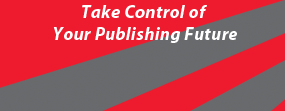
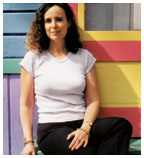
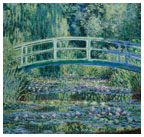

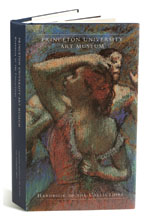 The museum has published a handbook of its collection. (Photos courtesy
Princeton University Art Museum. Top right: From the collection
of William Church Osborn, Class of 1883; bottom right: Museum Purchase,
Fowler McCormick, Class of 1921, fund)
The museum has published a handbook of its collection. (Photos courtesy
Princeton University Art Museum. Top right: From the collection
of William Church Osborn, Class of 1883; bottom right: Museum Purchase,
Fowler McCormick, Class of 1921, fund)